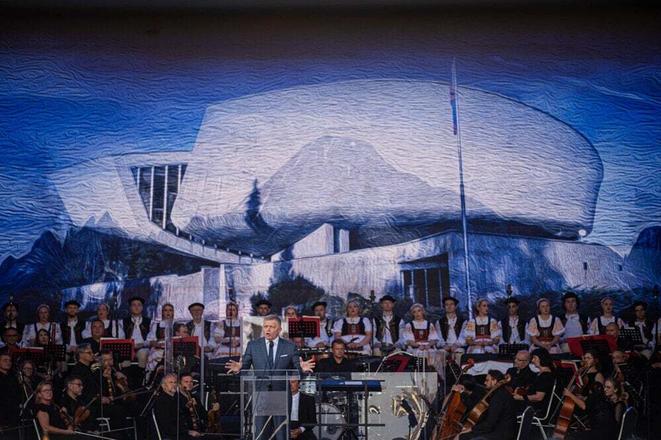Welcome to your weekly commentary and overview of news from Slovakia. Soldiers and politicians paraded in Banská Bystrica to mark the 80th anniversary of the Slovak National Uprising. Fico misses no opportunity to pick on the EU. And a story about the most disastrous mission by US wartime military intelligence.
If you have a suggestion on how to make this overview better, let me know at michaela.terenzani@spectator.sk.
Historical unconsciousness
A man-made hill rises above the meadow of Blonia in the Polish city of Kraków. Like the highest peak in Australia, it bears the name of Polish national hero Tadeusz Kościuszko. His story, including his participation in the American War of Independence and his later victory over Russian troops at the Battle of Raclawice, can be experienced in the museum beneath the hill, which, based on a peculiar Krakówian tradition, was built in Kościuszko's memory.
You will find the story of his childhood in bits and pieces tucked away behind many miniature doors, his first love Ludwika Sosnowska will tell you her story, and then you will set sail with Kościuszko across the Atlantic at the helm of a sailing boat, where the peaceful passage of time in the Polish countryside is replaced by the roar of the sea. Later comes a scene from the Kraków square where Kościuszko, already a seasoned military commander, takes a solemn oath and assumes command of the anti-Russian uprising.
The adventurer becomes a hero, a model patriot. With that, we leave the fortress in which the museum is located and climb the green hill looming over it, wreathed in white gravel paths. Below Kościuszko Hill is the beautiful city of Kraków, and looking at it one can understand why anyone would want to fight for it.
You may experience a similar feeling when you look down from Bradlo hill at the rolling hills in which Milan Rastislav Štefánik, the future adventurer who would also later become a hero and model patriot, roamed as a boy. More than a century after Kościuszko, a story began in those western-Slovak hills that is no less cosmopolitan, thrilling and inspiring than that of the Polish hero. In his native village of Košariská, a guide will tell that story to you in the museum, show you a replica of a room in his Paris apartment, souvenirs from Tahiti and astronomical instruments – but you will not feel that you have met Milan Rastislav Štefánik.


